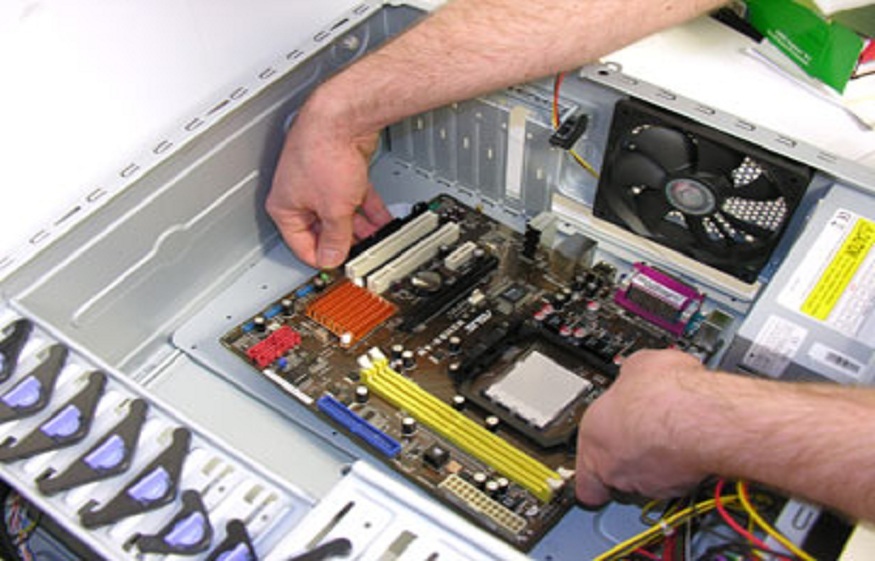Most of the components in your system, including the CPU, GPU, RAM, and storage, among others, are all installed on the motherboard. It is truly the backbone of your computer and is one of the first parts we install when building a PC from scratch. So, you need to make sure that the motherboard has been properly installed in the PC case before you proceed with installing the GPU or connecting the power supply. Now, installing a motherboard inside a computer case is not as daunting a task as some might have you believe, but there are a few things you need to keep in mind. That said, if you are building a new PC or upgrading your existing PC, let’s take a look at how to install the motherboard in your PC.
Step by Step Guide to Motherboard Installation (2023)
We’ll also help you perfectly connect the front I/O of your case, an otherwise confusing step for many PC builders. This is a step-by-step guide on how to install the motherboard into your PC case.
Things to Remember Before Installing Motherboard
Gather the necessary tools
While this may seem like an obvious prerequisite for building a PC, don’t forget to gather and organize your tools at your workplace. In this case, you’ll mainly need a Phillips screwdriver. Also, make sure your workplace is clean and ground yourself before you start working on PC components. Use an anti-static wrist strap during the installation process to avoid electrostatic damage.
Check motherboard compatibility with PC case
Choosing the right PC case is the next important step in the process. Depending on the size of your PC case, it can accommodate a full-size ATX, microATX, or mini-ITX board. As we described in our detailed guide on the different types of motherboards, you can find out which motherboards can fit in which type of PC case.
Motherboard Sizes – Types of Motherboard Form Factors
So, the PC case and the motherboard you are using must be compatible. For example, a full-tower case can fit all three types of motherboards, but a case with a smaller form factor can only fit a mini-ATX motherboard.
Install the main components on the motherboard
Before mounting the motherboard inside your PC, make sure to install the core components and complete the basic build outside of the case. We suggest installing the CPU on your motherboard, along with any RAM modules and USB sticks, before continuing with this guide. Additionally, you may want to install an air cooler or AIO before placing the motherboard inside the case.
Check the required power connectors
High-end motherboards like the ASUS ROG Z790-E tend to have two power connectors to support higher power limits for unlocked processors. So prepare your power cables accordingly for a successful motherboard installation.
Keep your motherboard manual handy
Make sure you have the motherboard manual handy before you start working on the build Why do you need it? Since not all motherboards are built the same, we may need to consult the manual to confirm the connectors for USB headers, RGB LEDs, front I/O, etc.
Motherboard Dead Ends Explained
So you unboxed your PC case and found small screw-like metal pieces installed where you need to place the motherboard. Now you are wondering what they are and what they are for. Well, these small metal pieces are called standoffs and you need to install them in your PC cabinet to make the case ready for the motherboard installation.
the motherboard spacer is screwed in
Each motherboard screw requires a standoff for installation, and its placement is determined by the size of your motherboard . As for why you need standoffs between your motherboard and the inside of the case, the answer is simple. Standoffs ensure that your motherboard’s bare PCB doesn’t touch the electrically conductive inside of the case.
Your motherboard screws into the standoffs you placed in the case, which not only ensures a secure installation, but also helps prevent the risk of shorting the card . Therefore, never screw the motherboard directly into place, as the correct positioning of the standoffs is a major step in installing the card.
How to install the motherboard inside a case
- As mentioned above, we will first make sure that the standoffs are in the correct location before mounting the motherboard. Standoffs are usually pre-installed in the case for a specific motherboard size, but you may need to reposition them for your motherboard. So, grab your tools and your motherboard to learn how to position the standoffs correctly.
- Now, place your motherboard inside the case on top of the standoffs installed in the case. The screw holes on the motherboard will align with some standoff positions . You may need to move your motherboard inside the case and align the holes with the standoff points. Then, evaluate whether or not the current standoff positions work for your motherboard installation.
In the demo below, we’ve highlighted a few of the motherboard’s screw holes in their clearance locations. You can see that one of the middle row standoffs is missing here, so we’ll have to install it manually. Continue to the next step to learn how to do this.

